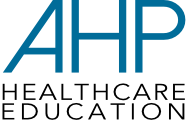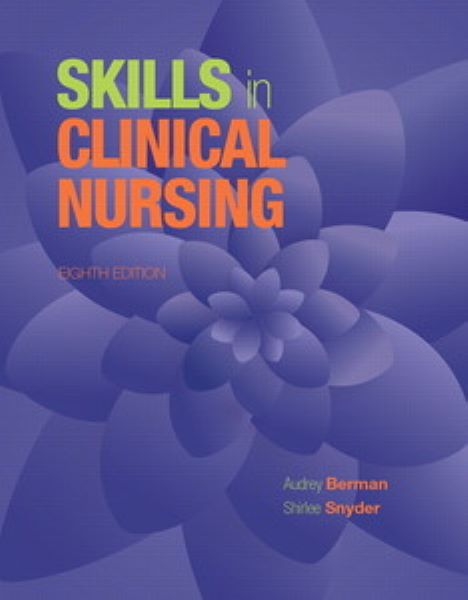Skills in Clinical Nursing
$93.99
Consistency and accessibility are essential to student success in the Fundamentals of Nursing course. With its clear, approachable, writing style, Skills in Clinical Nursing sets the foundation for nursing excellence. It provides detailed procedures on the most relevant skills performed by nurses as they enter practice. It includes all common variations and is organized from the simplest to the most complex. This edition has been revised and updated to reflect current practice, responding to extensive feedback from clinical nurses, market surveys, and the authors’ own teaching and practice experience. Each chapter contains concise introductory material, placing skills in the context of anatomy, physiology, and pathophysiology, and clearly explaining their purpose and rationale. Each skill is then presented in exceptional step-by-step detail, with over 800 illustrations. Skills coverage is complemented by critical-thinking insights on using assessment data, and essential guidance on appropriate delegation to unlicensed assistive personnel (UAP). Students will learn to think like nurses as they see how the material they are reading is applied in nursing practice. KEY TOPICS: Foundational Skills; Vital Signs; Health Assessment; Diagnostic Testing; Client Hygiene; Bed-Making; Infection Control; Heat and Cold Therapy; Pain Management; Positioning the Client; Mobilizing the Client; Fall Prevention and Restraints; Maintaining Joint Mobility; Drug Calculations; Administering Oral and Enteral Medications; Administering Topical Medications; Administering Parenteral Medications; Administering Intravenous Therapy; Feeding Clients; Assisting with Urinary Elimination; Assisting with Fecal Elimination; Caring for Clients with Peritoneal Dialysis; Promoting Circulation; Breathing Exercises; Oxygen Therapy; Suctioning; Caring for the Client with a Tracheostomy; Assisting with Mechanical Ventilation; Caring for the Client with Chest Tube Drainage; Administering Emergency Measures to the Hospitalized Client; Performing Wound and Pressure Ulcer Care; Orthopedic Care; Performing Perioperative Care; End-of-Life Care. MARKET: Skills in Clinical Nursing can be used as a primary textbook in clinical nursing education programs, and as a reference for practicing nurses.
Offer a consistent, seamless skills component. Because Kozier & Erb’s Fundamentals of Nursing, Tenth Edition and the Skills books are written by the same author team, fundamentals students experience a seamless presentation, style, and experience throughout. Contact your Pearson representative to package Kozier & Erb’s Fundamentals of Nursing, Tenth Edition with the authors’ Skills in Clinical Nursing, Eighth Edition.
In stock
Help each student think like a nurse using a clear, consistent presentation of nursing skills
- Give students both the detailed step-by-step instructions they need, and the context to use these instructions effectively and professionally. Step-by-step instructions are organized into a coherent, easy-to-understand nursing process framework.
- ENHANCED: Make learning complicated skills easier and more intuitive. Full-color photos and illustrations give students a visual representation of critical steps. The enhanced photo program includes more than 150 new photos and drawings to help students visualize concepts.
- NEW: Link QSEN competencies and make connections to nursing practice. This edition has incorporated QSEN competencies and specific expectations in special QSEN features. The QSEN features will guide students to learn and maintain safety and quality in their provision of nursing care by providing specific examples of how they relate to everyday practice.
- NEW: Help students succeed with an increasingly diverse client population. Culturally Responsive Care features highlight diversity and special considerations in nursing care.
- NEW: Help students succeed in any care facility or environment. Ambulatory and Community Settings features provide information about performing skills in diverse healthcare facilities and settings.
- NEW: Reinforce safe nursing practices. Safety Alerts correlate to the National Patient Safety Goals and identify other crucial safety issues.
- NEW: Help students become effective members of a collaborative health care team. A section on Interprofessional Practice is included where relevant in specific skills to reinforce that multiple members of a health care team may be performing the same skill. Recognition of the overlapping of scopes of practice emphasizes the importance of a team approach to client care.
- Ensure that students always know why they are doing what they are doing. Easy-to-find rationales give students a clearer understanding of why critical steps are performed.
- Help students understand how skills fit together in real-world practice. The Applying the Nursing Process Feature ties each unit’s content together in a complete case study.
- Empower students to choose the method that works most effectively with each patient. Variations present alternative methods of performing certain skills.
- Prepare students to provide safe and efficient care as part of teams that include Unlicensed Assistive Personnel (UAP). Delegation features explain when it is appropriate for nurses to delegate, and how to delegate tasks to Unlicensed Assistive Personnel (UAP).
- Help students visualize the performance of skills, anticipate unexpected outcomes, and respond to them quickly, safely, and effectively. “What If” features visually represent the flow of a skill in concept map format, exploring unexpected outcomes, and presenting options for them.
- Help students avoid errors, anticipate high-risk situations, and respond effectively to unexpected outcomes. Clinical Alerts highlight high-risk situations and other important information.
- Help students quickly and accurately select the right procedures and skills. Practice Guidelines provide instant-access summaries of common procedures and clinical practice.
- Prepare students to provide the best possible care to geriatric and pediatric patients. Lifespan Considerations present key age-related care issues.
- Help students become more effective at patient teaching, one of today’s most critical nursing roles. Patient Teaching Considerations present tips and tools to help patients facilitate self-care and wellness.
- Help students go beyond rote skills performance to become thoughtful, highly effective professionals. Focus on Clinical Thinking sections at the end of each chapter, promote critical thinking with application-oriented scenarios and questions.
- Help students find additional reliable information to explore skills even more thoroughly. Readings and References provide evidence-based sources and additional reading to support chapter content.
- Provide a clear, approachable introduction. Consistency and approachability are key for new nursing students. A very clear, approachable writing style makes this book popular with students and instructors.
- Offer a consistent, seamless skills presentation. Because Kozier & Erb’s Fundamentals of Nursing, Tenth Edition and the Skills in Clinical Nursing books are written by the same author team, fundamentals students experience a seamless presentation, style, and experience throughout.
Keep your course current
- NEW: Stay up-to-date with current standards of care. This edition continues to value and update standards of care as evidenced by the current CDC and WHO definitions and guidelines, 2014 National Patient Safety Goals for hospitals and long-term care, Infusion Nursing Society guidelines, ANA Scope & Standards, 2014 Hypertension Guidelines; IHI Pressure Ulcer Prevention Guidelines, OSHA/CDC BBP and Infection Prevention Standards, and Cancer Screening Guidelines.


